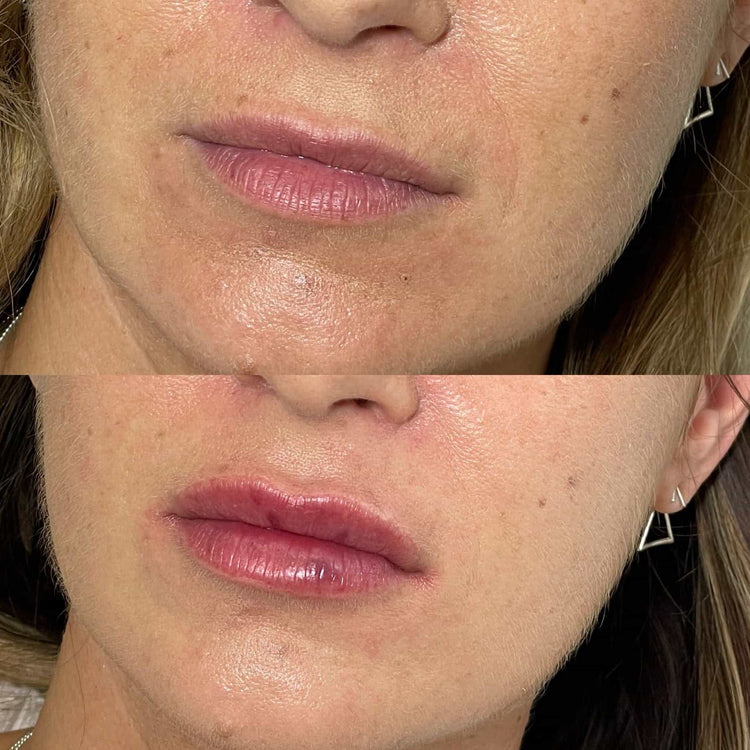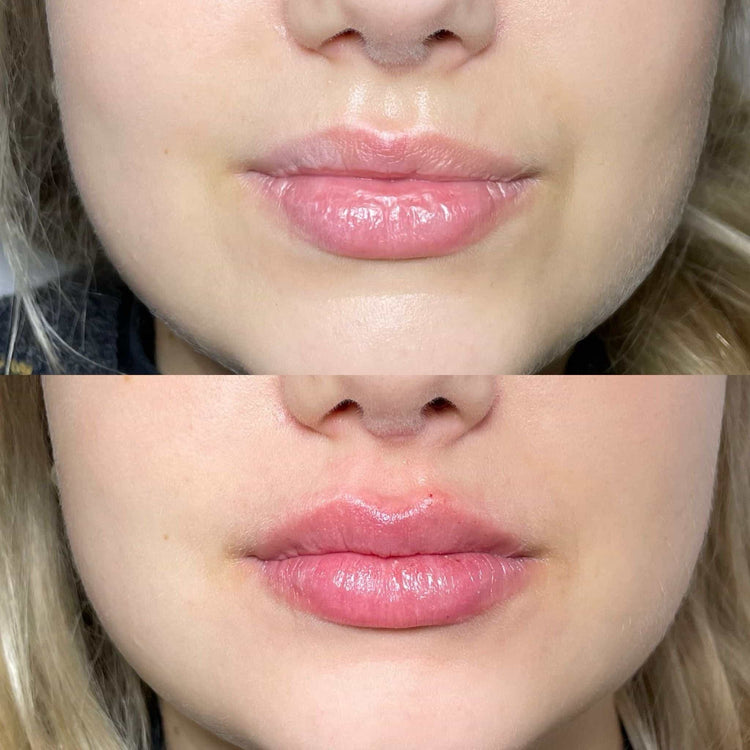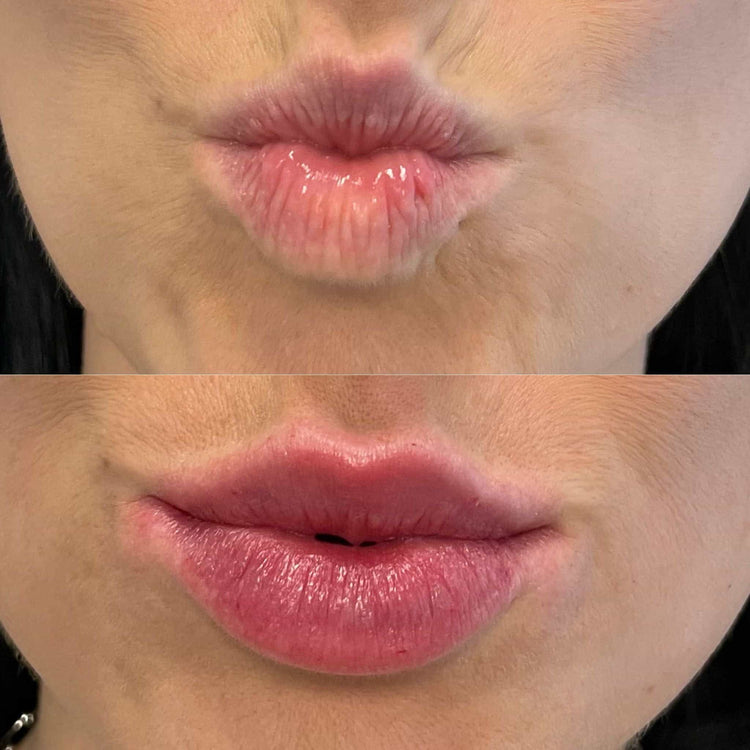Potential Complications
Filler dissolving treatment, while popular for correcting unwanted aesthetic results from dermal fillers, carries potential complications that patients should be aware of before undergoing the procedure.
Infection
Infection is a potential complication associated with any invasive medical procedure, including filler dissolving treatment. The introduction of medication into the skin can create an opportunity for bacteria to enter the body and cause an infection. Symptoms of infection may include redness, swelling, pain, warmth, or discharge from the injection site.
Inflammation and Swelling
Inflammation and swelling are common side effects of filler dissolving treatment. The medication used to dissolve the filler can trigger an inflammatory response in the body, leading to redness, swelling, and tenderness around the injection site.
- These symptoms usually subside within a few days or weeks but may persist longer in some cases.
- It is important to follow the post-treatment instructions provided by your practitioner to minimize the risk of complications.

Allergic Reactions
Allergic reactions are another potential complication. Hyaluronic acid, a common ingredient in dermal fillers, can trigger allergic reactions in some individuals. Symptoms of an allergic reaction can range from mild (redness, itching) to severe (swelling of the face or throat, difficulty breathing). If you have a history of allergies, it is crucial to inform your practitioner before undergoing filler dissolving treatment.
While rare, there’s also a risk of vascular occlusion, where the injected solution blocks blood vessels. This can lead to tissue damage if blood flow is restricted. It’s vital to choose a qualified and experienced practitioner who understands the risks associated with this procedure and takes appropriate precautions to minimize them.
Lumpy Appearance (Nodules)
One potential complication is a lumpy appearance, which can manifest as nodules. These nodules may form due to uneven dissolving of the filler material or as a reaction to the dissolving medication.
If nodules appear, they should be addressed by the practitioner who performed the filler dissolving treatment. They may recommend further treatments or interventions to resolve the issue.
Asymmetry and Uneven Results
Potential complications associated with filler dissolving treatment can include uneven results and asymmetry.
- Asymmetry can occur if the filler is not dissolved evenly, leading to one side of the face appearing different from the other.
- Uneven dissolving can also result in lumpy or bumpy texture, as some areas may dissolve more quickly than others.

It’s important to discuss your expectations with your practitioner and understand the potential risks involved before undergoing filler dissolving treatment.
Long-Term Risks
Filler dissolving treatment offers a way to correct unwanted cosmetic results from dermal fillers, but it is essential to understand the potential risks associated with this procedure.
Migration of Filler
Long-term risks of filler dissolving treatment are generally considered to be low. However, some potential concerns include persistent swelling or inflammation, and the possibility of scarring.
Migration of filler material is another long-term risk. While the dissolving agent aims to break down the filler, tiny particles may not be completely eliminated and can migrate to other areas of the face or body over time. This can result in unexpected lumps or bumps in unintended locations.
It’s crucial to choose a highly experienced and qualified practitioner who is skilled in performing filler dissolving treatments. Following their post-treatment instructions carefully can help minimize the risk of long-term complications.
Pigmentation Changes
Long-term risks associated with filler dissolving treatment are generally considered low, but some potential concerns exist. Persistent swelling or inflammation may occur in some individuals even after the initial healing period. Scarring is another possibility, although it’s relatively uncommon if the procedure is performed correctly.
One less common long-term risk is filler migration. Even though dissolving agents are designed to break down filler material completely, tiny particles might not be fully eliminated. These particles could migrate to other areas of the face or body over time, potentially causing unexpected lumps or bumps in unintended locations.
Tissue Damage
Long-term risks associated with filler dissolving treatment are generally considered low, but some potential concerns exist. Persistent swelling or inflammation may occur in some individuals even after the initial healing period. Scarring is another possibility, although it’s relatively uncommon if the procedure is performed correctly.
One less common long-term risk is filler migration. Even though dissolving agents are designed to break down filler material completely, tiny particles might not be fully eliminated. These particles could migrate to other areas of the face or body over time, potentially causing unexpected lumps or bumps in unintended locations.
Psychological Impacts
Filler dissolving treatment, while a popular solution for correcting undesirable aesthetic outcomes from dermal fillers, comes with potential risks that patients should carefully consider.
Body Dysmorphia
Body dysmorphia is a mental health disorder characterized by a preoccupation with perceived flaws in one’s appearance. Individuals with body dysmorphia often spend an excessive amount of time worrying about their looks and may engage in repetitive behaviors, such as checking mirrors or picking at their skin, in an attempt to alleviate their distress.
This disorder can have a profound impact on a person’s quality of life, leading to social isolation, anxiety, depression, and even suicidal thoughts. It’s important to remember that body dysmorphia is not simply vanity or a matter of low self-esteem; it is a serious mental illness that requires professional help.
Dissatisfaction with Results
Dissatisfaction with the results of filler dissolving treatment can lead to a range of psychological impacts. If a patient perceives the results as unsatisfactory, they may experience feelings of disappointment, frustration, and even anger.
This dissatisfaction can erode self-esteem and confidence, particularly if the perceived flaw affects how someone feels about their appearance. It can also lead to anxiety and social withdrawal, as individuals may avoid situations where they feel self-conscious about their looks.
In some cases, dissatisfaction with filler dissolving treatment can exacerbate existing body image issues or contribute to the development of body dysmorphia. The relentless focus on perceived imperfections can become a cycle of dissatisfaction, further treatment attempts, and ongoing psychological distress.
Other Considerations
Filler dissolving treatment offers a way to correct unwanted cosmetic results from dermal fillers, but it is essential to understand the potential risks associated with this procedure.
Cost and Affordability
The cost of filler dissolving treatment can vary depending on several factors, including the amount of filler being dissolved, the location of the injection sites, and the practitioner’s experience and fees.
It is important to discuss pricing and payment options with your chosen practitioner beforehand to ensure transparency and avoid unexpected expenses.
Affordability can be a concern for some individuals considering filler dissolving treatment. If cost is a barrier, explore financing options or payment plans offered by the clinic.
Alternatively, consider discussing alternative treatments with your practitioner that may be more budget-friendly but achieve similar results.
Choosing a Qualified Practitioner
Choosing a qualified practitioner for filler dissolving treatment is crucial to minimize risks and ensure optimal outcomes.
Look for a practitioner who is licensed and experienced in performing this specific procedure. Inquire about their training, qualifications, and the number of filler dissolving treatments they have performed.
Don’t hesitate to ask for before-and-after photos of previous patients to assess the practitioner’s skill and aesthetic sense.
It is important to feel comfortable and confident in your chosen practitioner. Schedule a consultation to discuss your goals, expectations, and any concerns you may have. A good practitioner will listen attentively, answer your questions thoroughly, and provide realistic advice about the potential risks and benefits of filler dissolving treatment.

Aftercare Instructions
Aftercare instructions are crucial for minimizing risks and ensuring optimal healing after filler dissolving treatment. Your practitioner will provide specific guidelines tailored to your individual needs, but some general recommendations include:
Avoid touching or massaging the treated area to prevent infection and disrupt healing.
Apply ice packs to reduce swelling and discomfort.
Use gentle cleansers and avoid harsh chemicals or scrubs on the treated area.
Refrain from strenuous activity, excessive sun exposure, or heat therapy for a period of time as advised by your practitioner.
Follow any prescribed medication regimens and attend follow-up appointments as scheduled to monitor healing progress and address any potential complications.
Adhering to these aftercare instructions will promote proper healing, minimize the risk of complications, and help you achieve the desired aesthetic outcome.
Rejuvenate your smile by dissolving lip fillers with Dr. Laura Geige at It’s Me & You Clinic.
- Wrapped Sinner Sex Position - June 30, 2025
- Downturned Smile Treatment Near Hascombe, Surrey - June 28, 2025
- When Can You Fly After Lip Filler - June 28, 2025
